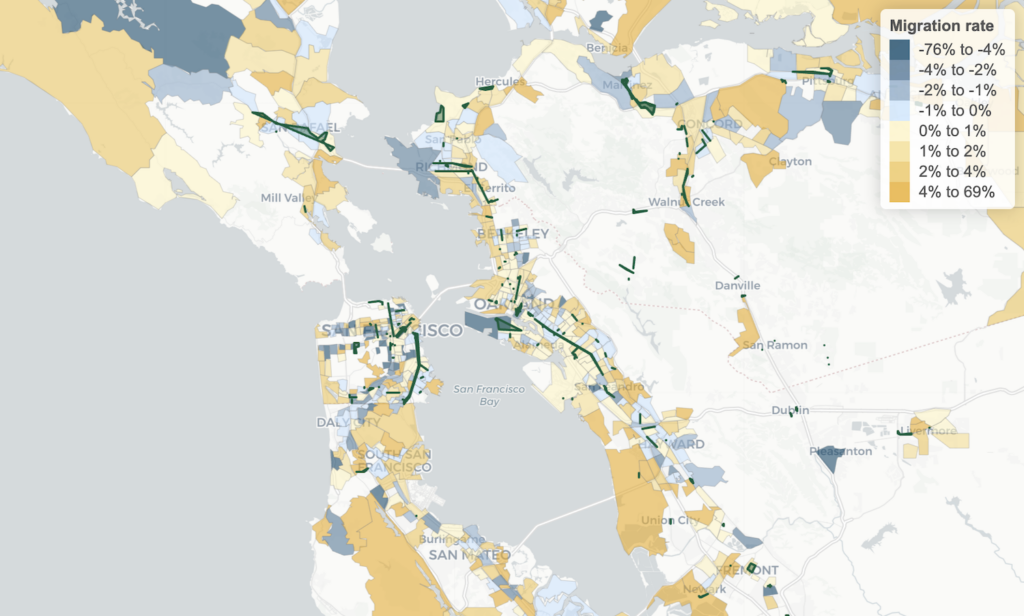Urban greening research awarded NASA Equity and Environmental Justice Grant

CED is proud to announce that the inaugural NASA Equity and Environmental Justice Grant has been awarded to Professor of Landscape Architecture Iryna Dronova, DCRP Professor Emerita Karen Chapple, and DCRP Assistant Professor Zoé Hamstead for their proposal, “Where the Grass Grows Greener: The Impacts of Urban Greening on Housing Prices and Neighborhood Stability.”
The two-year study examines the relationship of green space in the San Francisco Bay Area, to property prices, rents, household mobility, and the redevelopment pipeline. Understanding this balance will enable the research team to determine the impacts of adding green space on community stability and affordability.
The onset of climate change has increased awareness of the importance of city green spaces which mitigate heat extremes, absorb flood waters, act as fire breaks, support urban agriculture, and provide recreational space for residents. While urban greening provides these benefits, it may also increase property values and thus the risk of gentrification and resident displacement. Moreover, cities often support the redevelopment of informal open space used by locals for community gardens, urban pathways, and sports fields since it is considered vacant or underutilized land. Thus greening trends place vulnerable urban residents in double jeopardy: first, they risk losing access to existing open spaces, and second, they may not be able to stay in their communities. This domino effect is termed “green gentrification.”
The relative importance of various drivers of displacement variability and the specific contribution of green space are still not sufficiently understood at regional scales relevant to development planning and climate adaptation. “It is also hard to predict when development happens whether it will promote inclusion or exclusion in communities,” says Professor Iryna Dronova, lead project investigator.
“The San Francisco Bay Area, where we are focusing, is an excellent context for the study because it is very heterogeneous–economically, demographically, and ecologically–and it is a region with a dynamic housing market, where the population keeps growing and where inequalities are exacerbated,” says Dronova.
Over the next two years, the interdisciplinary team will leverage NASA satellite products sensitive to urban microclimate and greenspace with census and proprietary data on household mobility and historic data for insight into past trends. The analysis will culminate in a web-based interactive map allowing residents and planners to examine the location of greenery in relation to housing market dynamics as well as current and planned development.
The public tool will target community groups, researchers, and decision-makers to a create dialogue surrounding their research and its effects. “It is a first step,” says Dronova. “There is a lot of room for feedback, but we hope to bring people together using this tool as a shared landscape for informed conversation.”